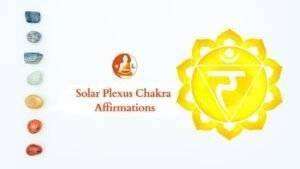Yoga combines three dimensions of well-being: physical, mental, and spiritual in one ancient practice. The Moon Salutation, or Chandra Namaskar, is a quiet, introspective flow of a Moon Salutation, perfect for counterbalancing the invigorating Sun Salutation (Surya Namaskar). So, what is a moon salutation in yoga, and why should you include it in your practice?
A Moon Salutation in Yoga is an asana flow at its heart inspired by the cycle of the moon. The slow, circular, and reflective movements encourage practitioners to turn inward while staying aligned with the lunar cycle. This sequence will induce calm for the mind, greater flexibility, and emotional balance.
While the Sun Salutation is moving and heat-inducing, the Moon Salutation is calmly introspective. Practiced toward the end of the day or during the waning phases of the moon, it is typically restorative, focusing on calming tensions and restoring balance.
Adding the moon salutation yoga practice to your daily routine will definitely add more depth to your practice, increasing your connection with nature’s rhythms. Be it stress relief, mindfulness, or preparation for restful sleep, this sequence can come in handy. Let’s learn about this lovely flow that comes out of the Moon Salutation, its origin, structure, and benefits.
Table of Contents
ToggleUnderstanding the Moon Salutation Sequence
The Moon Salutation is a flow of yoga poses, composed to be synchronized with the gentle energy of the moon. It typifies coolness, reflection, and the balance that comes between effort and ease. This flow is great for the evening or times when one feels stressed as it encourages grounding and introspection.
Salute to the Moon Sequence
The following postures are common in the Moon Salutation, though variations abound :
- Mountain Pose: Tadasana Starting point, balanced, grounded
- Upward salute the moon sequence: Urdhva Hastasana Extends upwards to draw in lunar energy
- Half-Moon Pose: Ardha Chandrasana Lateral stretch, the crescent shape of the moon
- Wide-Legged Forward Bend: Prasarita Padottanasana Grounds and releases tension in the body
- Goddess Pose: Utkata Konasana Symbol of strength as well as balance
- Triangle Pose: Trikonasana Stability opens the entire body.
These are repeated on both sides to establish equality and symmetry. Unlike Sun Salutation which has linear forms, there tends to be more circular or fluid movements in moon yoga salutation.
Origins and Symbolism
The Moon Salutation, for example, is not considered to have an older origin than that of the Sun Salutation. It is considered to have been designed in modern yoga as a complement to the hot, masculine energy of Surya Namaskar by the cool, feminine energy of the moon. The moon salutation yoga sequence follows the phases of the moon, representing withdrawal, mental clarity, and harmony with natural cycles.
In yogic philosophy, the moon symbolizes the Ida Nadi- the energy channel that embodies calmness and intuition. Moon Salutation practice induces the channel, hence relaxation and mental clarity flow.
Benefits of Moon Salutation
Incorporating the Moon Salutation into your yoga session brings a plethora of physical, mental, and emotional benefits into your life:
Physical Benefits
- Increases Flexibility: Lateral stretches and flowing movements together stretch the body to increase overall flexibility.
- Promotes Balance: Engaging both sides of the body equally enhances symmetry and stability.
- Aids Circulation: The sequence stimulates circulation, aiding in detoxification and overall well-being.
Mental Benefits
- Reduces Stress: The calming nature of the Moon Salutation helps alleviate stress and anxiety.
- Improves Focus: Practicing with mindful breathing enhances concentration and mental clarity.
Emotional Benefits
- Encourages Reflection: The meditative aspects of the practice foster self-awareness and emotional balance.
- Moon Salutation Prepares to Rest: It is the perfect pose to send the mind and the body into a restful sleep after a busy day.
Also Read: How to Sequence a Hatha Yoga Class?
How to Perform the Moon Salutation?
To be able to practice the moon salutation effectively:
- Set the Mood: Invert the ambiance by using dim lights and soft music.
- Slowly Begin: Do a mild warm-up first to prepare your body.
- Flow with Breath: Let the flow of breath guide your movement, at a slow and steady pace.
- Repeat Both Sides: Be sure to do each sequence on both sides, keeping it balanced.
- End with Stillness: End with some quiet time in Savasana (Corpse Pose) to seal the practice.
Moon Salutation vs. Sun Salutation
Both of the sequences are parts of the yoga practice but differ in their application:
- Sun Salutation (Surya Namaskar): Energizing, stimulating, and heating Best to practice in the morning
- Moon Salutation (Chandra Namaskar): Calming, balancing, and cooling Best to practice in the evening.
Together, they balance effort with ease and energy with rest in a holistic yoga practice.
Tap Into the Lunar Energy
A moon salutation in yoga is a powerful yet gentle sequence that honors the moon’s calming energy. This flow promotes balance, flexibility, and introspection, making it a perfect addition to any yoga routine. Whether you’re seeking to unwind after a hectic day or deepen your connection to your inner self, the Moon Salutation offers an opportunity to cultivate harmony and peace.
Ready to enter lunar flow? Roll out your mat, follow the soft rhythm of it, and allow the moonlight to guide you into your journey toward calm.
Frequently Asked Questions
The Moon Salutation is usually best practiced in the evening or at times when you feel the need to calm yourself down.
Yes. Beginners can modify the poses to suit their flexibility and gradually progress to the
It increases flexibility, alleviates stress, balances energy, and brings mindfulness and relaxation.
A printable Moon Salutation sequence serves as a visual guide to help you follow the poses in the correct order. Place it where you can easily see it during your practice, such as on a wall or yoga mat. Refer to it as you move through the flow, focusing on deep, steady breathing. This is especially helpful for beginners or those unfamiliar with the sequence.











